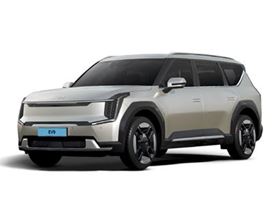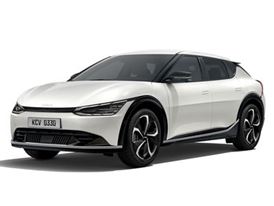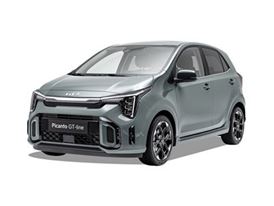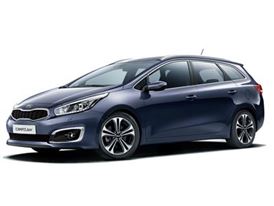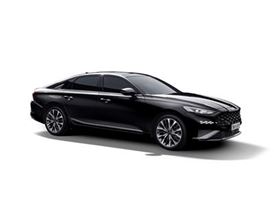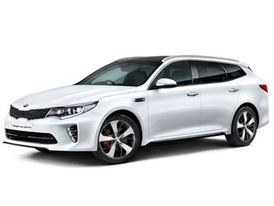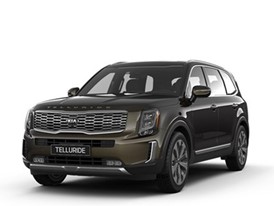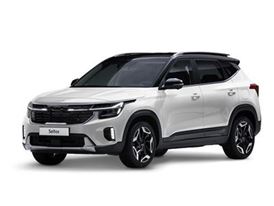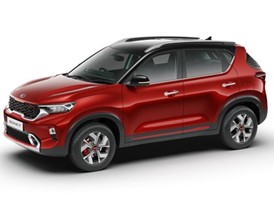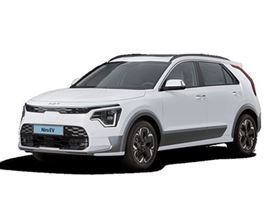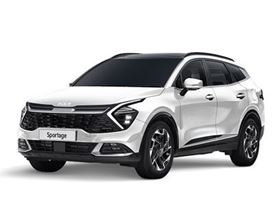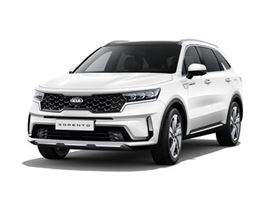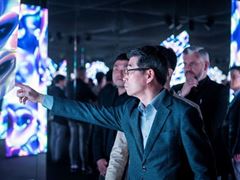Kia Motors today presents its future mobility vision at the 2018 Consumer Electronics Show (CES) in Las Vegas. Under its new ‘Boundless for all’ vision, Kia will bring a future in which opportunities for mobility and transportation are limitless. To broaden horizons with its mobility services, Kia is also demonstrating a range of new technologies as part of its new ‘ACE’ strategy to make its cars more Autonomous, Connected and Eco/Electric.
“‘Boundless for all’ is Kia’s future vision – where everyone has the opportunity to enjoy the infinite value that future mobility will bring. This is Kia’s manifesto for its role as a mass mobility provider in the future. Consumers are bound today by the idea that a car is ‘just a vehicle’, but Kia is committed to providing a broader solution to mobility. ‘Boundless for all’ represents a future in which a vehicle can be so much more than the sum of its parts,” said Dr. Woong-chul Yang, Vice Chairman and Head of Kia R&D Center.
Kia’s ‘ACE’ strategy is based around three core elements, presenting Kia’s vision for future personal transportation:
Alongside these technologies, Kia announced its plans to roll-out its ‘WiBLE’ car-sharing service – launched in Korea in 2017 – to new regions from 2018, starting with Europe.
Beyond Autonomous Driving: Kia’s exhibition theme for ‘connected’ vehicles
At CES 2018, Kia is presenting a range of interactive exhibits which combine existing and future technologies. These demonstrate how vehicles could be optimized for enhanced connectivity as they become more autonomous.
Kia’s exhibits at CES 2018 hint at a future ‘Beyond Autonomous Driving’. Visitors can interact with Kia’s developing autonomous drive technologies through a VR simulator, while also experiencing a V2X diorama demonstrating how cars could connect with other vehicles and the urban environment.
The company plans to operate a large-scale test fleet for autonomous technology on public roads from 2019, paving the way for commercial production of the technology. Kia aims to commercialize Level 4 autonomous vehicles in smart cities from 2021 with a new Smart City pilot project.
“Kia’s connected cars will be both boundless and connected and offer a new kind of mobility experience. Virtual reality, self-driving cars, and ‘vehicle-to-everything’ connectivity were all once considered technologies of the distant future. As they rapidly become a reality, Kia is exploring how to deploy these new technologies for its customers. Our strategy and vision for future mobility is demonstrated by a range of interactive displays, showing what our customers can look forward to,” said Vice Chairman Yang.
16 new electrified vehicles by 2025
Kia will continue to expand its range of environmentally-friendly cars in the coming years, and plans to offer a total of 16 electrified vehicles by 2025, including a fuel-cell electric vehicle (FCEV) in 2020.
“By 2025, we will offer a total of 16 advanced powertrain vehicles, with five new hybrids and plug-in hybrids, five new battery EVs, and an all-new mass market FCEV. Due to launch in 2020, this FCEV will spearhead Kia’s efforts to realize a zero-emission future for mobility,” said Vice Chairman Yang.
As part of this strategy, Kia is exhibiting the Niro EV Concept at CES 2018. Combining the stylish design of a modern compact SUV with the high efficiency of an advanced battery-electric powertrain, the Kia Niro EV Concept represents the next step in the brand’s ongoing journey to electrification.
Created by Kia’s design studio in Korea, the Niro EV Concept is a fully-electric compact SUV. Its aerodynamically-efficient body allows air to slip over, around and beneath the vehicle with ease. The traditional grille – no longer required for engine cooling – is replaced by a smooth interactive display panel, combined with ultra-slim lamp technology in the overall front. In profile, the concept draws inspiration from the current Kia Niro, with a modish compact crossover silhouette, elevated body and wide C-pillar. The Niro EV Concept’s seamless rear aspect has clean and sharp trailing edges allowing air to flow more easily off the back of the car.
With a silent electric powertrain, and the anticipation that such a car would be driven most frequently on urban and suburban roads, the Niro EV Concept boasts new technologies to enhance safety for pedestrians.
The concept’s new Active Pedestrian Warning System (APWS) features a combination of front view cameras, object recognition technology and front speakers. If the system detects a pedestrian or cyclist crossing in front of the car, the speakers sound an alert targeted specifically at that person, warning them of the car’s presence. APWS is matched by the Niro EV Concept’s new interactive lighting system, which offers users and pedestrians a highly-intuitive visual communication with vehicle.
Inside, the cabin has been designed with a pure, minimalist and digital appearance, creating greater user interaction with new technologies and features. With a wrap-around design to cocoon the driver and passengers, the dashboard’s horizontal layout has broad and smooth surfaces. The effect is an innate sense of space and calm in the cabin, enhanced by the soft shades of silver, grey and bronze covering every surface.
The Niro EV Concept is powered by a next-generation electric vehicle powertrain, using new production technologies earmarked for near-future EVs from Kia. Energy is provided by a high-capacity 64 kWh lithium-polymer battery pack, paired with a powerful 150 kW electric motor. The Niro EV Concept suggests a driving range of 238 miles (383 kilometers), with zero tailpipe emissions.
Interactive exhibits preview new in-car technology
At CES 2018, Kia is exhibiting its latest HMI technologies, autonomous drive features and the world’s first in-car 5G connection. These exhibits hint at innovations that could be adapted for use in the brand’s future vehicles. Kia is demonstrating these innovations through a set of interactive cockpit-style experiences, presenting the brand’s ‘Beyond Autonomous Driving’ vision with technologies that idle passengers can draw upon in a future of vehicle autonomy.
The first cockpit gives visitors the chance to experience the Niro EV Concept’s pioneering new HMI, with enhanced interaction between visitors and the vehicle. The infotainment and HVAC (heating, ventilation and air conditioning) systems are controlled by touch and gesture, with the steering wheel acting as a remote. The driver can ‘swipe’ along a perforated leather area on the base of the two-spoke wheel, with different gestures serving to switch between favorite music tracks, turn up the volume, and adjust cabin ventilation settings. A digital dashboard display provides additional information to the driver, such as vehicle settings, powertrain status, and trip information.
Creating a more digital interaction between car and driver than in a traditional vehicle, the HMI allows drivers to ‘log-in’ to the vehicle using face and voice recognition. The facial and voice recognition technology, developed in collaboration with Amazon Web Services (AWS), welcomes drivers and adjusts vehicle settings based on preset individual preferences. Leveraging ‘Amazon Rekognition’ and ‘Amazon Polly’ – highly accurate facial analysis and voice services provided by AWS – the new system disables many of the car’s functions if the driver does not pass the identification process.
The HMI cockpit at CES 2018 lets users experiment with these exciting new in-car technologies.
A second cockpit demonstrates the world’s first in-vehicle 5G connection – with a real-time connection established between Las Vegas and Seoul, Korea. The 5G connection enables users to stream contents reliably into the car, linked to the exhibit’s infotainment system.
The second cockpit also presents the Niro EV Concept’s Separate Sound Control System, allowing users in the front and rear rows to experience Kia’s sound separation technology. The technology allows front and rear passengers to listen to their own music at the same time without intruding on others in the car. The system features eight speakers installed in the headrests, simultaneously pumping out sounds for each seat row, and using noise-cancellation technology to ‘mute’ sound from the other row of seats. By creating two sound zones in the car, occupants in different rows can enjoy listening to separate music or podcasts. Developed in-house, Kia believes this technology could be adapted to enhance occupant comfort in future production cars.
Finally, visitors can experience Kia’s own autonomous drive support technologies with a series of virtual reality exhibits. The VR simulations demonstrate Kia’s autonomous drive support technologies in a range of environments, via VR headsets.
WiBLE car-sharing service to launch in Europe in 2018
Enabling urban and suburban mobility, Kia has today announced plans to roll-out its ‘WiBLE’ car-sharing service to new regions. Launched in Korea in 2017, WiBLE – a portmanteau of ‘Widely Accessible’ – will be introduced to certain European markets and cities from late 2018. Kia plans to expand the service into other markets around the world in the coming years.
WiBLE will be serviced in the designated areas in city centers, providing vehicles to customers who need to drive but may not own a car of their own or who want more convenient drive in city centers.
In Korea, WiBLE users have access to a variety of different Kia cars to complete their journeys, including the Soul EV, Niro hybrid crossover and larger vehicles. Vehicles are equipped with a range of Kia’s active safety technologies to help customers complete journeys safely in a car with which they may not be familiar. This format is expected to be carried over into new WiBLE markets.
WiBLE is accessed via an accompanying smartphone app. Users then pay for individual journeys in a WiBLE vehicle, charged according to the amount of time they use the car. WiBLE in Europe enables users to complete one-way journeys, rather than requiring them to return the car to the same point, for maximum convenience and value for money.
Kia will announce the first European locations for the launch of WiBLE later in 2018.
